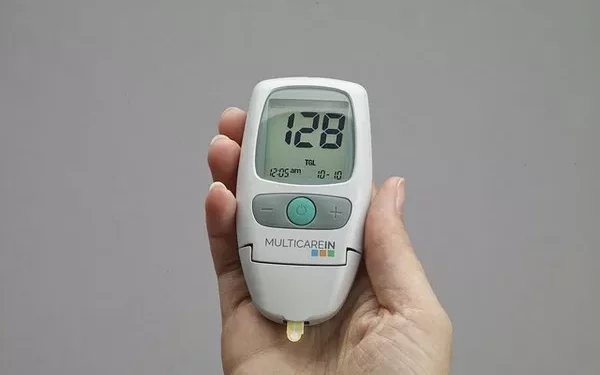Postprandial hyperglycemia refers to elevated blood glucose levels that occur after eating. It is a significant aspect of diabetes management and control. In individuals without diabetes, blood sugar levels typically rise modestly after meals and quickly return to normal due to the effective action of insulin. However, in those with diabetes or impaired glucose tolerance, blood sugar levels can rise excessively after eating and remain elevated for prolonged periods. This condition, known as postprandial hyperglycemia, can lead to various short-term and long-term health complications if not properly managed.
Mechanisms Behind Postprandial Hyperglycemia
Insulin Secretion and Action
Insulin is a hormone produced by the pancreas that helps regulate blood glucose levels by facilitating the uptake of glucose into cells for energy production. After eating, insulin is secreted in response to the rise in blood glucose levels, helping to lower these levels back to normal. In individuals with diabetes, several mechanisms can contribute to postprandial hyperglycemia:
Impaired Insulin Secretion: In type 1 diabetes, the body’s immune system attacks and destroys insulin-producing beta cells in the pancreas, leading to insufficient insulin production. In type 2 diabetes, beta cells may become dysfunctional over time, resulting in inadequate insulin secretion in response to meals.
Insulin Resistance: In type 2 diabetes and prediabetes, the body’s cells become resistant to the effects of insulin, meaning that even if insulin is present, it is less effective at lowering blood glucose levels. This insulin resistance leads to higher postprandial blood glucose levels.
Gastrointestinal Factors
The digestive system plays a critical role in the regulation of blood glucose levels after eating. Several factors in the gastrointestinal tract can influence postprandial hyperglycemia:
Gastric Emptying: The rate at which food leaves the stomach and enters the small intestine can affect postprandial blood glucose levels. Rapid gastric emptying can lead to a quick and large rise in blood glucose levels, while slower gastric emptying can result in a more gradual increase.
Incretin Hormones: Incretin hormones, such as glucagon-like peptide-1 (GLP-1) and gastric inhibitory polypeptide (GIP), are released from the gut in response to food intake. These hormones enhance insulin secretion and suppress glucagon (a hormone that raises blood glucose levels), helping to regulate postprandial blood glucose levels. In individuals with diabetes, the incretin effect may be reduced, contributing to postprandial hyperglycemia.
Glucagon Secretion
Glucagon is a hormone produced by the alpha cells of the pancreas that raises blood glucose levels by stimulating the liver to release stored glucose. In individuals with diabetes, especially type 2 diabetes, there may be an inappropriate increase in glucagon secretion after meals, leading to higher postprandial blood glucose levels.
Diagnosis of Postprandial Hyperglycemia
Diagnosing postprandial hyperglycemia involves measuring blood glucose levels after meals. Several methods can be used to assess postprandial blood glucose levels:
Self-Monitoring of Blood Glucose (SMBG)
Individuals with diabetes are often advised to monitor their blood glucose levels regularly using a glucometer. Testing blood glucose levels 1-2 hours after eating can help identify postprandial hyperglycemia and guide treatment adjustments.
Continuous Glucose Monitoring (CGM)
Continuous glucose monitoring systems use a small sensor placed under the skin to measure interstitial glucose levels continuously. CGM provides real-time data on blood glucose levels throughout the day, including postprandial periods, allowing for a comprehensive assessment of glucose patterns and trends.
Oral Glucose Tolerance Test (OGTT)
The oral glucose tolerance test is a diagnostic test used to assess how well the body handles glucose. During an OGTT, an individual drinks a glucose solution, and blood glucose levels are measured at intervals over a 2-3 hour period. Elevated blood glucose levels during the test can indicate postprandial hyperglycemia and impaired glucose tolerance.
Impact of Postprandial Hyperglycemia on Health
Postprandial hyperglycemia can have significant short-term and long-term health consequences if not properly managed. Understanding these impacts highlights the importance of addressing postprandial blood glucose control in diabetes management.
Short-Term Effects
Hyperglycemia Symptoms: Elevated blood glucose levels after meals can cause symptoms such as increased thirst, frequent urination, fatigue, and blurred vision. These symptoms can affect daily functioning and quality of life.
Cognitive Impairment: Postprandial hyperglycemia has been associated with cognitive impairment, particularly in older adults. Fluctuations in blood glucose levels can affect brain function and lead to difficulties with concentration and memory.
Long-Term Effects
Cardiovascular Disease: Chronic postprandial hyperglycemia contributes to the development and progression of cardiovascular disease. Elevated blood glucose levels can lead to endothelial dysfunction, increased oxidative stress, and inflammation, all of which are risk factors for atherosclerosis and cardiovascular events.
Microvascular Complications: Persistent postprandial hyperglycemia can damage small blood vessels, leading to microvascular complications such as retinopathy (damage to the eyes), nephropathy (kidney damage), and neuropathy (nerve damage).
Increased Risk of Diabetes: In individuals with prediabetes, postprandial hyperglycemia is a predictor of the progression to type 2 diabetes. Addressing postprandial blood glucose control can help delay or prevent the onset of diabetes.
Management Strategies for Postprandial Hyperglycemia
Effective management of postprandial hyperglycemia involves a combination of lifestyle modifications, dietary changes, and, if necessary, medications. These strategies aim to improve blood glucose control and reduce the risk of complications.
Dietary Modifications
Diet plays a crucial role in managing postprandial blood glucose levels. Several dietary strategies can help mitigate postprandial hyperglycemia:
Carbohydrate Counting: Monitoring carbohydrate intake and distributing it evenly throughout the day can help prevent large spikes in blood glucose levels after meals. Choosing complex carbohydrates with a low glycemic index can also help achieve better postprandial control.
Portion Control: Controlling portion sizes, especially for high-carbohydrate foods, can help manage postprandial blood glucose levels. Smaller, more frequent meals may be beneficial for some individuals.
Fiber-Rich Foods: Including fiber-rich foods, such as whole grains, vegetables, and legumes, in the diet can slow the absorption of glucose and reduce postprandial blood glucose spikes.
Balanced Meals: Combining carbohydrates with protein and healthy fats can help slow gastric emptying and reduce the rate at which glucose enters the bloodstream, leading to more stable postprandial blood glucose levels.
Physical Activity
Regular physical activity improves insulin sensitivity and helps regulate blood glucose levels. Incorporating exercise into the daily routine can have a significant impact on postprandial blood glucose control:
Aerobic Exercise: Activities such as walking, jogging, cycling, and swimming can help lower blood glucose levels after meals. Engaging in aerobic exercise for at least 30 minutes most days of the week is recommended.
Resistance Training: Strength training exercises, such as weightlifting or resistance band exercises, can improve insulin sensitivity and help maintain muscle mass, which is important for glucose metabolism.
Medications
In some cases, lifestyle modifications alone may not be sufficient to manage postprandial hyperglycemia, and medications may be necessary. Several classes of medications can help control postprandial blood glucose levels:
Rapid-Acting Insulin: Rapid-acting insulin analogs, such as insulin lispro, aspart, and glulisine, can be administered before meals to control postprandial blood glucose levels. These insulins work quickly to lower blood glucose levels after eating.
GLP-1 Receptor Agonists: Glucagon-like peptide-1 (GLP-1) receptor agonists, such as exenatide and liraglutide, enhance insulin secretion, suppress glucagon release, and slow gastric emptying, all of which help reduce postprandial blood glucose levels.
DPP-4 Inhibitors: Dipeptidyl peptidase-4 (DPP-4) inhibitors, such as sitagliptin and saxagliptin, increase the levels of incretin hormones, improving insulin secretion and reducing postprandial blood glucose levels.
Alpha-Glucosidase Inhibitors: Medications such as acarbose and miglitol inhibit enzymes that break down carbohydrates in the intestines, slowing the absorption of glucose and reducing postprandial blood glucose spikes.
Monitoring and Adjusting Treatment
Regular monitoring of blood glucose levels is essential for managing postprandial hyperglycemia. Self-monitoring of blood glucose (SMBG) and continuous glucose monitoring (CGM) can provide valuable insights into glucose patterns and help guide treatment adjustments. Healthcare providers can use this data to make informed decisions about medication dosages, dietary changes, and lifestyle modifications.
Special Considerations in Different Populations
Postprandial hyperglycemia can affect various populations differently, and management strategies may need to be tailored to individual needs and circumstances.
Older Adults
Older adults with diabetes may be more susceptible to postprandial hyperglycemia and its complications. Cognitive decline, reduced physical activity, and changes in metabolism can all contribute to eleated blood glucose levels after meals. In this population, it is important to balance blood glucose control with the risk of hypoglycemia (low blood sugar) and ensure that dietary and medication regimens are appropriate for their overall health status.
Pregnancy
Postprandial hyperglycemia is a critical concern in pregnant women with gestational diabetes mellitus (GDM) or pre-existing diabetes. Elevated blood glucose levels after meals can affect both maternal and fetal health. Managing postprandial hyperglycemia through dietary modifications, physical activity, and, if necessary, insulin therapy, is essential to reduce the risk of complications such as macrosomia (large birth weight), preterm birth, and preeclampsia.
Children and Adolescents
In children and adolescents with type 1 diabetes, postprandial hyperglycemia can be particularly challenging to manage due to variations in growth, activity levels, and dietary habits. Effective management strategies include carbohydrate counting, insulin dosing adjustments, and regular physical activity. Education and support for both the child and their caregivers are crucial for successful blood glucose control.
See also: Does Hyperglycemia Cause Nausea?
Conclusion
Postprandial hyperglycemia is a common and significant aspect of diabetes management that requires careful attention and control. Understanding the mechanisms behind postprandial blood glucose spikes, recognizing the impact on health, and implementing effective management strategies are essential for reducing the risk of complications and improving overall health outcomes. By combining dietary modifications, physical activity, medications, and regular monitoring, individuals with diabetes can achieve better postprandial blood glucose control and enhance their quality of life.
Related topics:
What’s the Relationship Between Hyperglycemia and Type 2 Diabetes


























